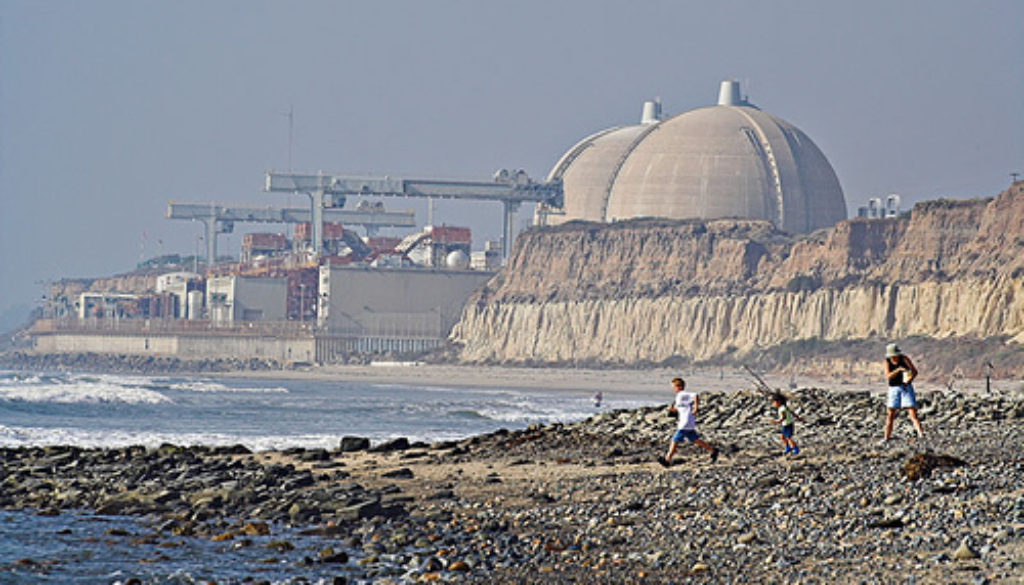FERC Rejects DOE’s Dangerous Proposal to Shield Coal and Nuclear From Clean Energy Competition
By Casey Roberts, Sierra Club
On January 8, the Federal Energy Regulatory Commission (FERC) decisively shut the door on one of the worst ideas of 2017 — the Department of Energy’s notice of proposed rulemaking that would have offered enormous, unwarranted subsidies to any generator that stores 90 days of fuel on-site (read: coal and nuclear plants). Rick Perry’s proposed Grid Resiliency Pricing Rule was a blatant attempt to prop up coal and nuclear generation that would otherwise retire as a result of cheaper, cleaner, and more flexible generation coming online. In short, it would have allowed any generator with a 90-day supply of fuel on-site to recover its full operating costs, plus a guaranteed profit, rather than requiring those generators to earn their revenues in a competitive market. The impossibly thin reed upon which this proposal was justified was that these generating resources were needed for “resilience” during extreme weather events when fuel supply might be disrupted, despite extensive evidence that during 2014’s extreme winter weather (the “Polar Vortex”), coal piles froze and coal plants otherwise had to shut down due to frozen instrumentation. It is hard to overstate just how poorly supported DOE’s proposal was, not to mention the irony of its dramatic effort to prevent an enormous source of fossil fuels from shutting down in the name of protecting Americans from extreme weather events.
The Sierra Club had submitted extensive technical comments on the proposed rule, along with Earthjustice, NRDC, and EDF, among other environmental and consumer advocacy groups. These comments laid out the case that there is no resilience crisis, that coal and nuclear generators are inflexible and prone to extended shutdowns, that renewable energy and demand response contribute enormously to grid reliability, and that the cost of DOE’s proposal would have been staggering. The Sierra Club has also worked continuously to expose excessive fossil fuel industry influence at DOE. After an extremely compressed public comment period and previous concerning comments by the acting chairman, Neil Chatterjee, that FERC would indeed send out a “lifeboat” for retiring fossil plants, FERC’s unanimous rejection of the DOE proposal has consumers, environmental advocates, grid operators, and many others breathing a sigh of relief.
FERC rejected DOE’s proposed rule on multiple grounds, citing reams of evidence in support of its decision. FERC’s authority in this space derives from Section 206 of the Federal Power Act, and requires the Commission to find that existing market rules are “unjust, unreasonable, unduly discriminatory or preferential. FERC found that “[n]either the Proposed Rule nor the record in this proceeding has satisfied the threshold statutory requirement of demonstrating that the RTO/ISO tariffs are unjust and unreasonable.” The Commission noted the lack of any evidence that a past or pending generator retirement posed a threat to resilience. FERC found the proposed remedy of offering all plants with a 90-day fuel supply fuel cost recovery plus profit to likely constitute undue discrimination, as only certain resources were eligible for this cost recovery, regardless of whether other resources could provide the same services to the grid. The discriminatory nature was especially concerning to the Sierra Club and other clean energy advocates, given that renewable energy resources are invulnerable to fuel-supply disruptions and can provide many grid support services even more accurately than thermal generation.
Although FERC unanimously rejected DOE’s proposal, it acknowledged that “the record developed to date have shed additional light on resilience more generally and on the need for further examination by the Commission and market participants of the risks that the bulk power system faces and possible ways to address those risks in the changing electric markets.” Accordingly, FERC initiated a new rulemaking docket to gather input on what resilience means, to understand how each grid operator is currently assessing and ensuring grid reliability, and if necessary to evaluate whether additional Commission action is needed. FERC’s methodical approach here is in sharp and refreshing contrast to the conclusory assertions in DOE’s proposal that radical changes were needed immediately to forestall a clear threat to resiliency, regardless of the cost to consumers. The next step is for grid operators to respond to FERC’s detailed questions regarding resilience in two months; other interested parties then have 30 days to respond.
While FERC’s decision deftly avoids the disaster that was DOE’s proposed rule and lays out a more sensible process going forward, there remains a risk that the process could be hijacked by fossil fuel interests looking for any thread of a justification to hold onto market share despite plummeting renewable energy costs. The Sierra Club will remain engaged in the new rulemaking to ensure that FERC fully understands the reliability contributions of renewable energy and demand-side management as well as the short-term and long-term threats posed by fossil fuel generation, not to mention the exorbitant costs to consumers. As Commissioner Cheryl LaFleur noted in her concurring statement, the “Commission should continue to focus its efforts not on slowing the transition from the past but on easing the transition to the future.”

